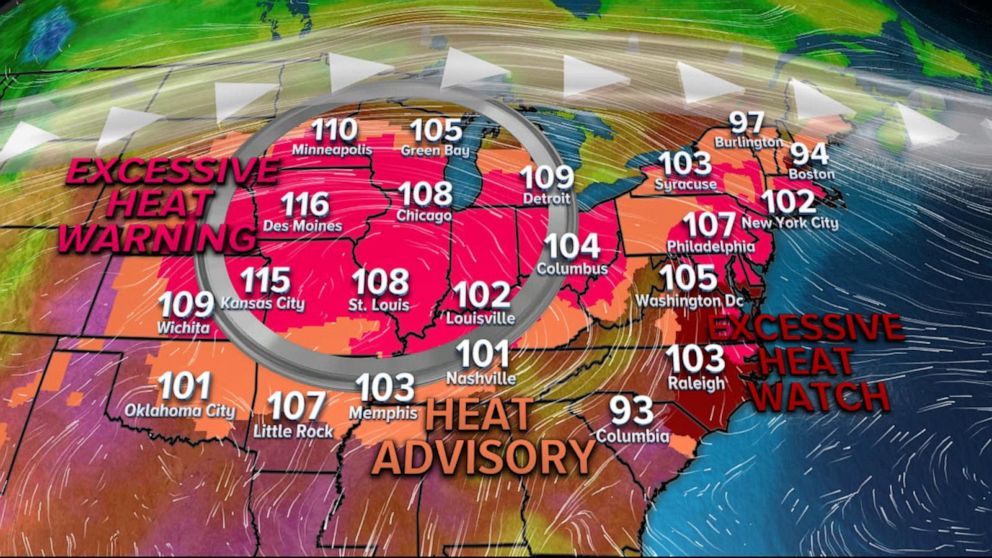Understanding The Absence Of Excessive Heat Warnings In Weather Forecasts

Table of Contents
Factors Influencing the Issuance of Excessive Heat Warnings
Several factors interplay to determine whether an excessive heat warning is issued. These aren't simple on/off switches; rather, they involve a complex interplay of scientific data, forecasting limitations, and resource considerations.
Thresholds and Criteria
Meteorological agencies globally utilize specific temperature and humidity thresholds to trigger heat warnings. These thresholds, often expressed as a heat index, incorporate both temperature and humidity to represent the perceived air temperature. However, these criteria aren't universal.
- Heat Index: A measure combining temperature and humidity to reflect how hot it feels.
- Daily Maximum Temperature: The highest temperature recorded during a 24-hour period.
- Duration of Heat: The number of consecutive days experiencing extreme heat.
Thresholds vary significantly based on historical data, regional climate norms, and the specific agency's risk assessment strategies. A heat index of 105°F might trigger a warning in one region but not another, reflecting differing levels of acclimatization and vulnerability.
Forecasting Limitations
Accurately predicting extreme heat events several days in advance remains a significant challenge. Weather patterns are inherently chaotic, making long-range forecasting prone to inaccuracies.
- Unexpected Shifts in Weather Patterns: Sudden changes in air pressure, wind direction, or humidity can dramatically alter projected temperatures.
- Limitations in Weather Models: Even the most sophisticated weather models have inherent limitations in precisely capturing the nuances of heatwave development.
Furthermore, human error in model interpretation and data analysis can also contribute to forecasting uncertainties.
Data Availability and Coverage
Reliable and widespread weather monitoring networks are paramount for accurate heatwave forecasting. However, data coverage isn't uniform globally.
- Sparse Weather Stations in Remote Areas: Data scarcity in sparsely populated or remote regions can hinder accurate forecasting.
- Reliance on Citizen Reporting: Supplementing official data with citizen reports can be helpful, but its reliability needs careful consideration.
Forecasts for urban areas often differ from those for rural areas due to the "urban heat island effect," where cities tend to be significantly hotter than surrounding rural regions.
Communication and Dissemination of Heat Warnings
Even with accurate forecasts, effectively communicating the risk to the public is crucial. This is where communication strategies and targeted outreach play a pivotal role.
Public Awareness and Understanding
Effectively conveying the severity and implications of excessive heat is challenging. Meteorological services employ various communication channels:
- Television and Radio Broadcasts: Traditional media remain vital for reaching a broad audience.
- Social Media Platforms: Social media provides real-time updates and targeted messaging.
- Mobile Apps: Weather apps offer personalized forecasts and warnings directly to users' smartphones.
Public education campaigns are essential for increasing awareness of heat-related illnesses and preventive measures.
Targeting Specific Vulnerable Populations
Heat warnings need to reach the most vulnerable populations effectively. This often involves tailored communication strategies.
- Collaborations with Healthcare Providers: Working with healthcare professionals ensures that vulnerable individuals receive timely warnings and advice.
- Community Outreach Programs: Direct engagement with community groups can help disseminate information effectively.
Accessibility is key; warnings must be available in multiple languages and formats to ensure everyone understands the risks.
The Role of Government Agencies and Emergency Services
Effective heatwave response requires collaboration between various government agencies and emergency services.
- Inter-agency Collaborations: Coordination between meteorological services, public health authorities, and emergency management agencies is essential.
- Emergency Response Plans: Having well-defined plans in place ensures a coordinated response to heat-related emergencies.
Other Contributing Factors
Beyond the factors discussed above, other issues can also influence the issuance and effectiveness of heat warnings.
Resource Constraints
Limited budgets and staffing can impact forecasting capacity, particularly in resource-constrained regions.
Political Factors
Political decisions or bureaucratic hurdles can sometimes hinder the timely dissemination of warnings.
Technological Advancements
Ongoing research and technological advancements continuously improve forecasting accuracy and warning systems. Improved modeling techniques and satellite data analysis are improving the predictive capabilities.
Conclusion: Understanding the Absence of Excessive Heat Warnings
The absence of excessive heat warnings in weather forecasts isn't simply due to negligence. It's a complex issue stemming from forecasting limitations, communication challenges, resource constraints, and other contributing factors. Understanding these complexities is paramount to improving heatwave preparedness and response. Remember to stay informed about local weather forecasts from official sources, learn about heat-related illnesses, and understand that the absence of excessive heat warnings doesn't necessarily mean there's no risk. Regularly check for updates on excessive heat warnings and related safety information from reputable sources to protect yourself and your community.

Featured Posts
-
 New Us Solar Tariffs Hit Malaysia And Three Other Countries
May 30, 2025
New Us Solar Tariffs Hit Malaysia And Three Other Countries
May 30, 2025 -
 Ticketmaster Virtual Venue Como Comprar Boletos De Forma Revolucionaria
May 30, 2025
Ticketmaster Virtual Venue Como Comprar Boletos De Forma Revolucionaria
May 30, 2025 -
 Air Jordan Sneaker Lineup May 2025 Releases
May 30, 2025
Air Jordan Sneaker Lineup May 2025 Releases
May 30, 2025 -
 Antsar Tarykhy Dyl Twrw Yktb Asmh Bahrf Mn Dhhb Fy Jyrw Iytalya
May 30, 2025
Antsar Tarykhy Dyl Twrw Yktb Asmh Bahrf Mn Dhhb Fy Jyrw Iytalya
May 30, 2025 -
 Finding Relief Primeras Natural Ingredients For Womens Bladder Issues
May 30, 2025
Finding Relief Primeras Natural Ingredients For Womens Bladder Issues
May 30, 2025
